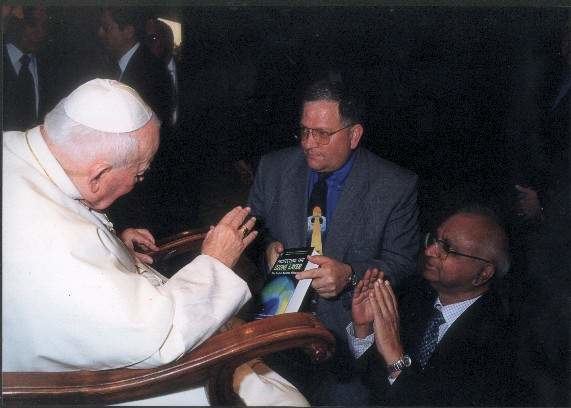Name Stephen Andersen | ||
 | ||
Books Technology Transfer for the Ozon, Industry Genius: Invention, Protecting the Ozone Layer: Th | ||
Stephen Oliver Andersen (born 17 January 1948) is the American Director of Research at the Institute for Governance & Sustainability (IGSD) and is also Senior Expert Member of the Montreal Protocol Technology and Economic Assessment Panel (TEAP) and from 1989 to 2012 was TEAP Co-Chair. He is considered one of the founders and leading figures in the success of the Montreal Protocol on Substances that Deplete the Stratospheric Ozone Layer, having earned one of eleven United Nations Environment Program Visionaries Awards for the first 25 years of the Montreal Protocol, the U.N. Global 500 Award that has also been earned by Jimmy Carter, Wangari Maathai, Jane Goodall and Service to America Career Achievement Medal.
Contents
Early life
Andersen was born in Logan, Utah, United States, the child of a professor of horticulture and a botanist. In high school he pursued a self-directed joint program that prepared him for either a career as an auto mechanic or entry into college. He choose college over auto mechanics and studied business administration for two years at his hometown Utah State University and then transferred in 1969 to the University of California, Berkeley where he earned B.S., M.S. and Ph.D. degrees in Agricultural and Natural Resources Economics. His PhD. thesis was supervised by Dr. Siegfried von Ciriacy-Wantrup (father of conservation economics), Dr. L. Timothy Wallace (later Director of the California State Department of Food and Agriculture (CDFA) and Dr. George Yadigaroglu (professor of nuclear engineering).
While a graduate student he was a member of the U.S. Department of Transportation “Climatic Impact Assessment Program” (CIAP) assessing the environmental and economic impacts of the decline in northern latitude grain production predicted as a consequence of climate change and depletion of the stratospheric ozone layer. A decade later ozone and climate protection defined Stephen’s life and passion.
Career
Andersen began his professional career in 1974 at Sierra Club Research, where he provided litigation support for cases including energy conservation, forestry, mining, national parks and marine mammal protection. In 1976 he joined the Environmental Law Institute (ELI) as their first economist working on a series of five books on energy conservation and later on a study with Lisle Baker (Suffolk University Law School) on the Vermont Land Gains Tax.
From 1977 to 1986, Andersen was a professor at College of the Atlantic, Bar Harbor Maine, Visiting Professor at the University of Hawaii, Manoa, and visiting scholar at Kyoto University working with professor Tsuneo Tsukatani on environmental and health economics. While a professor, he was a frequent consultant and expert witness for the Alaska office of the Sierra Club Legal Defense Fund (SCLDF, now Earthjustice), defending the Tlingit citizens of Angoon Alaska against timber cutting on lands considered sacred, stopping an open-pit molybdenum mine in Misty Fiords National Monument and more. He was also a member of the Board of the Natural Resources Council of Maine and expert witness in litigation that protected the Penobscot River against an inappropriate dam. As a professor, Andersen was primarily interested in how government institutions could craft regulations and incentives that would motivate industry to operate in the public interest while supplying private markets. He was particularly driven to prove governments could collaborate with industry to successfully protect the environment just as they had collaborated with industry to capture intellectual property and market shares. He also has strong academic interest in compensation economics, risk analysis, and river conservation.
In 1986 he joined the fledgling U.S. EPA team that built the scientific, technical and economic case for protecting the stratospheric ozone layer. At EPA he rose to Deputy Director for Stratospheric Ozone Protection and then transferred to the Climate Protection Partnerships Division where he was Director of Strategic Climate Projects until his retirement from government in 2009.
Andersen was an environmental entrepreneur at EPA who often accomplished his assignments in unconventional ways and complemented regulatory authority with voluntary partnerships and agreements. Three months after joining EPA, Andersen negotiated an agreement with Soviet authorities to carry a U.S. ozone mapping satellite to space on a Soviet rocket, which was made necessary after the Challenger accident. Within two years, he organized the first EPA voluntary programs (the phaseout of chlorofluorocarbons (CFCs) in food packaging and the recycling of CFCs in automobile air conditioning). He also founded and managed the first EPA international awards (the U.S. EPA Stratospheric Protection Awards and Climate Protection Awards), which helped create the Industry Cooperative for Ozone Layer Protection (ICOLP) and the Halon Alternatives Research Corporation (HARC) under the Cooperative Research Act. He was EPA Liaison to the U.S. Department of Defense on stratospheric ozone and climate and chaired several DoD committees on solvent validation, aircraft maintenance, manufacturing rockets without ozone-depleting substances (ODSs), and certifying the Joint Strike Fighter for particulate emissions.
In 1988, Andersen helped organize the technology assessment panel for the United Nations Environmental Programme (UNEP) Montreal Protocol by recruiting primarily experts working companies already pledged to halt the use of ozone-depleting substances. These experts, used corporate and partnership assets to identify or develop technology, to validate technical performance, and to clear away market barriers and create technical standards and procurement policy incentivizing their use.
On a trip to Japan he was introduced to Japanese writer and politician Wakako Hironaka (member Japanese Diet House of Councillors), who gave him a blueprint of how to work with Japanese industry. From that time on, every important partnership was in cooperation with the government and industry of Japan, including a partnership to phase out ODSs from developing countries within one year of the phaseout in Japan, a partnership with Thailand to phase out CFCs from refrigerator manufacture and to enact an environmental trade barrier to prevent CFC imports from undercutting price, a partnership of multinational companies operating in Vietnam to avoid increasing dependence on ODSs, and industry cooperation on stratospheric ozone protection in half a dozen Asian countries.
